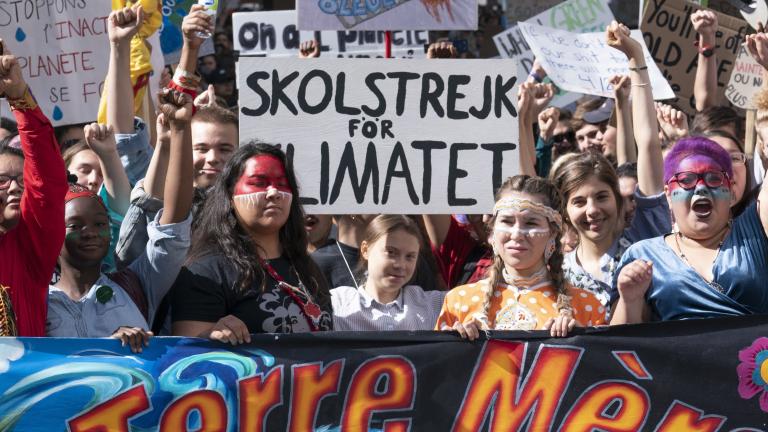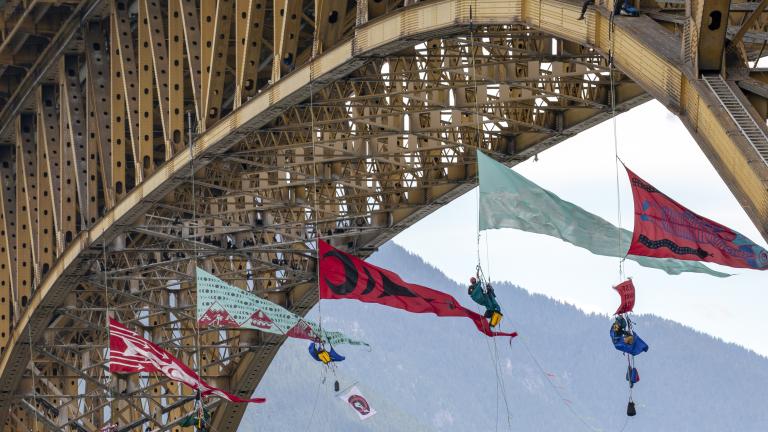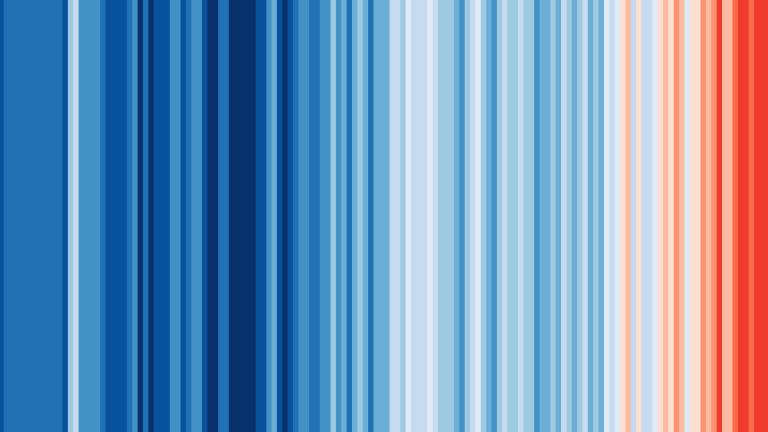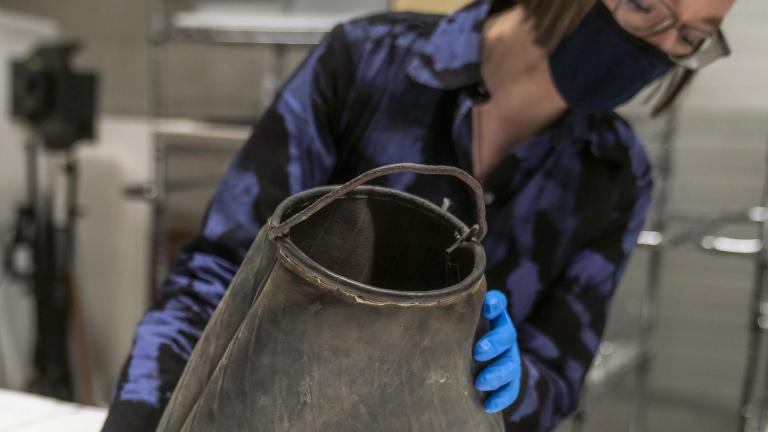The exhibit “Climate Justice” highlights the connections between human rights and climate change, foregrounding youth activism and voices.
Climate Justice (Level 2 — What Are Human Rights?)
Explore the connections between human rights and climate change that are at the heart of the climate justice movement.
June 2022 to June 1, 2025
This exhibition has passed.
Tags:

Canadian Press, photograph by Paul Chiasson
Exhibition details
Striking for the Climate

In 2019, youth worldwide go on school strikes. Instead of going to class, they take over city streets. Loudly, boldly, they denounce inaction on climate change. They fill the streets and protest with signs expressing anger about their uncertain future. They fear nothing will change – except the climate.
Greta Thunberg went on a school strike in 2018. At age 15, she ignited a global movement. Five hundred thousand people took to the streets of Montreal with her on September 27, 2019. There were more strikes in 150 cities around the world on that day.
Protecting the Land and Water

Many Indigenous youth are opposed to the exploitation of fossil fuels. They stand against pipelines to prevent harm to the land and all its living beings. They denounce the impacts of oil and gas projects on communities already experiencing discrimination, abuses and violations.
The Trans Mountain pipeline expansion brought Indigenous land defenders and climate activists together in waves of protest across Canada. A 40‐foot by 10‐foot (12 metre by 3 metre) protest banner designed by a young Tsleil‐Waututh artist from unceded Coast Salish lands in British Columbia, Ocean Hyland, hangs from the ceiling of the gallery.
Video: Banner designed by Indigenous artists hanging from the Iron Workers Memorial Bridge
Code Red for Humanity

Climate change is widespread, rapid and intensifying. Science tells us this with numbers and models. People around the world experience it in their everyday lives. Communities least responsible for the emissions causing global warming are those whose health, livelihoods and rights are most negatively impacted.
Around the world, higher temperatures, unpredictable rainfalls, floods and droughts are causing dire health consequences for poor and vulnerable communities.
